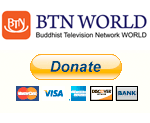
|
|
|
Home Asia Pacific North Asia S/N Korea News & Issues Another Korea Buddhism in North KoreaBy Andrei Lankov, The Korea Times, Jan 15, 2007Pyongyang, North Korea -- Some time in the late 1940s, a young Russian journalist made a tour of the Mt. Kumgang, accompanied by a local official. The numerous Buddhist temples scattered in the valleys attracted his attention, but the official assured the Soviet visitor: “Do not worry, we will take care of them. We will close most of them, and will find a good use for others - like, say, resorts for the working masses.”
It is difficult to say what the journalist felt back then, but when he recalled this episode in the early 1980s in his memories, his disdain was palpable. But this is indeed what happened to many - indeed, most - Buddhist temples in North Korea. For decades, the North Korean state was almost unique in its hostility to all forms of religion. Indeed, few if any Communist states ever came close to proclaiming and enforcing a complete ban on all kinds of religious activity - aside from North Korea, such a ban existed only in Albania, another ultra-Stalinist state (Pol Pot introduced the same policy in his infamous “Democratic Kampuchea,” but he did not stay in power long enough). In the late 1980s, a very limited amount of religious activity came to be tolerated, but for some 25 years, between 1960 and 1985, North Korea had neither temples nor officially recognized religious groups. However, if all religions are bad for the North Korean authorities, not all of them are equally bad. Some of them are worse, while others were ranked as marginally more tolerable. For the North Korean regime in its early years, it was the Christianity that was clearly seen as an embodiment of evil. This attitude was prompted by the fact that Christianity was a recent introduction, with too, too strong connections to foreign powers, above all, to the United States. It was both “reactionary” (as every religion) and anti-national. The most acceptable religion probably was Chondogyo, or the Teaching of the Celestial Way. Nowadays, this eclectic cult has somewhat waned and does not play a major role in either Korea, but for a century, from the 1860s to the 1940s, it was a important force in the spiritual life of the country. Its leaders and activists were prominent in two major outbreaks of the nationalist movement - the Tonghak Uprising of the 1890s and the March First Movement of 1919, and this tradition made the North Korean authorities somewhat more tolerant towards it. Buddhism fell somewhere between. It could not boast the nationalist credentials of Chondogyo - on the contrary, in the colonial era many Buddhists collaborated with the Japanese (as a matter of fact, some colonial administrators saw Buddhism as the “religion of empire” and actively promoted it). At the same time, it did not have Christianity’s close associations with “imperialist” powers. The land reform of 1946, proclaimed by the North Korean authorities (but actually designed by the Soviet military) inflicted the first major strike on Buddhism, and all land holdings of religious institutions were confiscated. This left the monks without any means of existence and drove many of them from the monasteries. To keep the Buddhists under control, the Korean Buddhist Union was created in late 1945 as an umbrella organization. It did not so much represent the believers as make them accountable to the emerging state bureaucracy. This was a standard device: Similar bodies were created for other religions as well. While all Christian churches ceased to function immediately after the Korean War, services were held in some Buddhist temples until the early 1960s. It is even possible, even if not particularly likely, that some services continued through the dark age of North Korean religious history, the period between 1960 and 1980. Of course, the former Buddhist monks were subjected to strict surveillance and numerous restrictions were placed on their social advancement. However, it seems that they fared better than former Christian activists and priests. The Buddhist Union was quietly disbanded in 1965 - at least, for years nothing was heard about this body for nearly a decade, and in all probability it fell out of existence for some time. However, from around 1975 the representatives of the North Korean Buddhist Association were again seen at international gatherings where they scorned the U.S. imperialist warmongers and their South Korean puppets, all the while explaining how happy the masses in their country were to be led by the “Great Leader.” The 1970s and 1980s witnessed a large-scale restoration of old Buddhist temples, and these days there are 63 officially recognized temples in North Korea. Some of them are allegedly used for religious services, but it is not clear when the services are real and when they are nothing but carefully staged performances for the sake of foreign visitors. It is known that nowadays there are some 300 monks in the North, all receiving their wages from the state and taking care of the temples. Thus, by the standards of North Korean religious policy, the treatment of Buddhism was not particularly harsh. However, it seems that Buddhism is not positioned to experience a dramatic revival in future. It appears that the North will eventually go Christian, and this Christianity is likely to be of a radical, nearly fundamentalist, variety. At least this is what can be guessed from the study of the events of the recent decade. |
 |
|
| Korean Buddhist News from BTN (Korean Language) |
|
 |
|
|
Please help keep the Buddhist Channel going |
|
| Point
your feed reader to this location |
|

 << Pyohun temple in Mt. Kumgang, North Korea
<< Pyohun temple in Mt. Kumgang, North Korea

